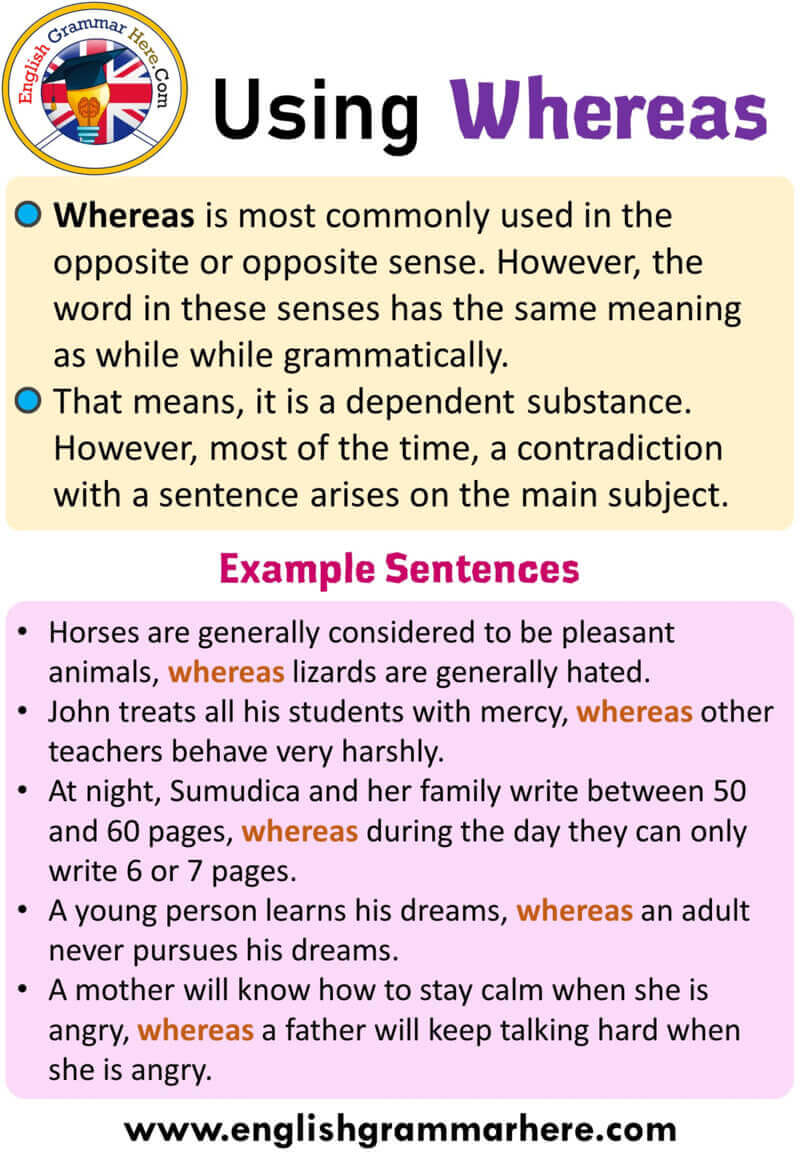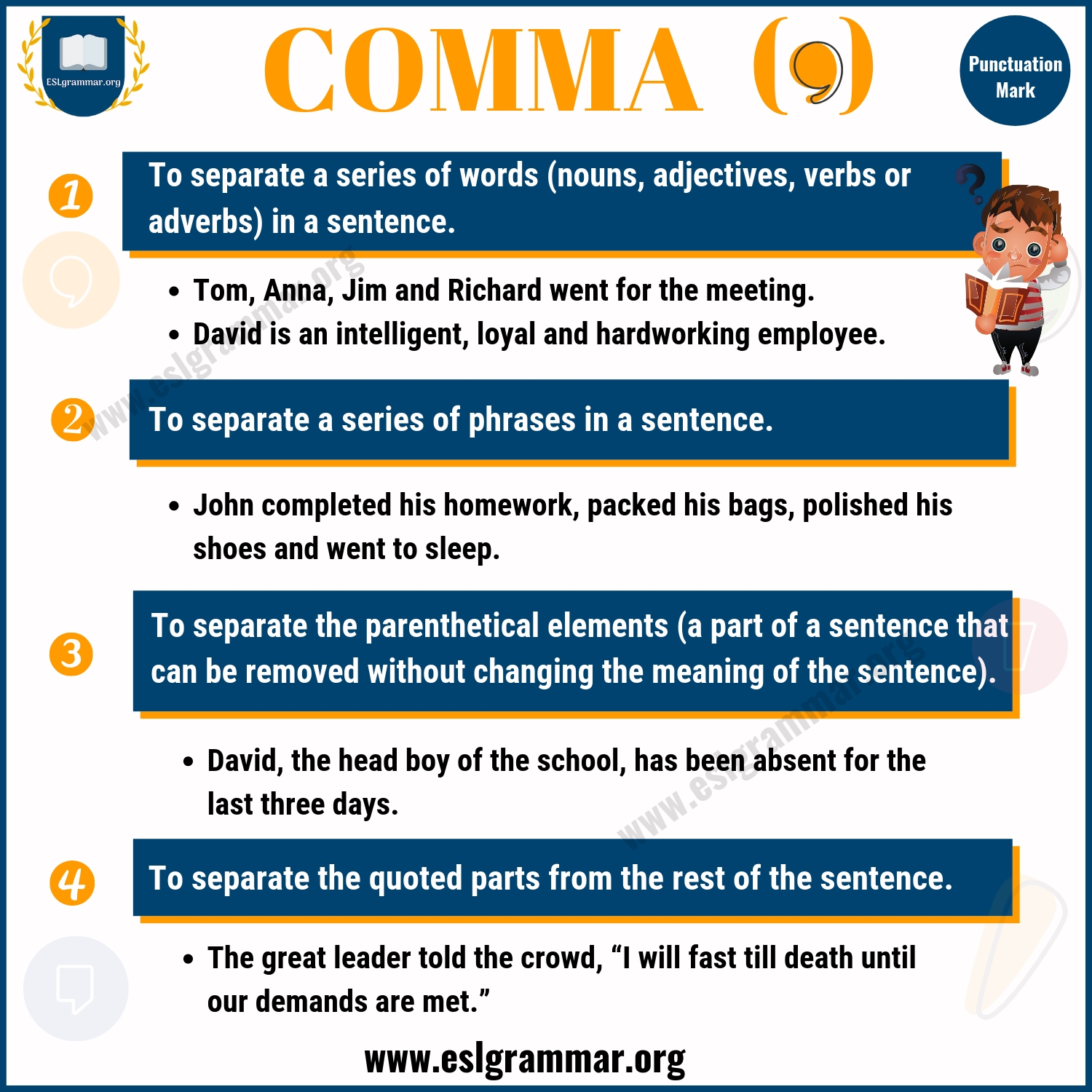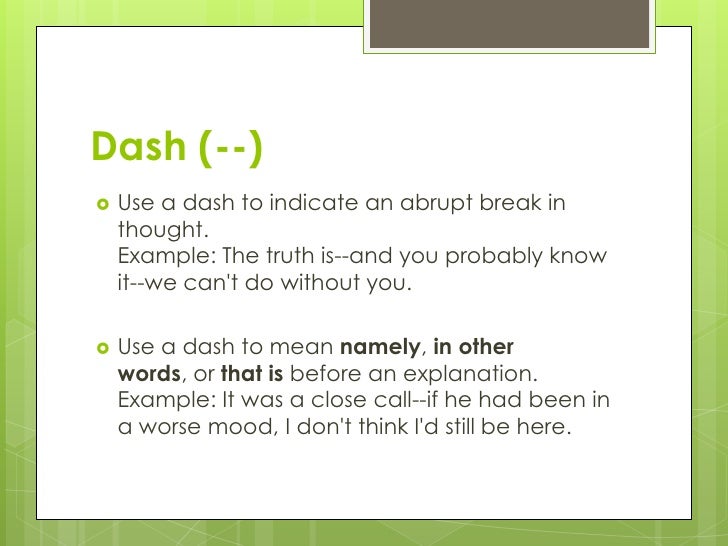When you know how to use a dash correctly, it can be a handy piece of punctuation. The problem is that sometimes it is difficult to know exactly when to use an em dash (—) or an en dash (–). Generally speaking, an em dash is used to create emphasis or to establish an informal tone. An en dash is common when indicating a range of numbers or creating compound adjectives.
Just remember a few basic rules and your writing will be dashing along in no time. Use a hyphen to connect two words in a compound modifier to clarify meaning, but don't use a hyphen after adverbs ending in -ly (a much-loved aunt but a deeply loved aunt). For whether to hyphenate compound verbs and compound nouns (back-check but backstab; co-occurrence but cooperation; fundraising but fund-raiser), check the dictionary. Ask yourself if yourparenthetical remarkwill add nuance and insight to your writing or just confuse the reader. If it's the latter, return the dashes to your punctuation tool bag and use a comma, colon, or semicolon instead, or revise the sentence so that you can omit the dreaded dash. An em dash—inserted by typing Control+Alt+Minus between the words it separates—signals an abrupt break in thought.
It can be seen as "surprising" the reader with information. If used judiciously it can mark a longer, more dramatic pause and provide more emphasis than a comma can. If overused, it creates an impression of haste and carelessness and can diminish cohesion in your paragraphs.
Think carefully before peppering your papers with them. Hyphens are punctuation marks with several functions. They are used to modify nouns to form compound adjectives, transform a phrasal verb into a noun, and tie together phrasal adjectives. Parentheses also signify a break in thought, but they mark an addition of information rather than an interruption like dashes do.
Rather than a surprise , parentheses are a gentler insertion in your sentence. Also like dashes, parentheses should be used sparingly. Too many can break the clarity and flow of your ideas. Another thing to keep in mind is that they are often seen as casual in tone, so make sure they are appropriate for the style of writing you are using. If not, punctuation marks such as commas are often more academically appropriate.
Hyphens ("-") connect two words to make a single word. Though they look similar to dashes ("–" and "—"), they serve a different purpose. The dash is a form of punctuation that comes in between words whereas hyphens combine words. Like most components of English punctuation, hyphens have general rules regarding how they should be used. Hyphens are often used to connect adverbs and adjectives when describing a noun. The em dash can function like a comma, a colon, or parenthesis.
Like commas and parentheses, em dashes set off extra information, such as examples, explanatory or descriptive phrases, or supplemental facts. Like a colon, an em dash introduces a clause that explains or expands upon something that precedes it. Some circumstances, such as indicating date or number ranges, will always call for en dashes. Others, such as offsetting information or creating a pause, don't always need an em dash.
Use dashes to create greater emphasis or to foster an informal tone in your writing. Don't rely on them for situations when another form of punctuation will do. An en dash (–) is very different from a hyphen (-). En dashes are used to show a span or a range, a score, or a conflict/connection between two words. A hyphen would likely be confused with an en dash when joining words. Remember though that the connection/conflict that en dashes are used for are for nouns generally.
There's really only one rule when it comes to hyphens, but breaking this rule is surprisingly common. Besides that, any mistakes are largely due to confusing hyphens with em dashes and en dashes. First, we'll highlight the differences between hyphens and em dashes and en dashes, and then we'll take a closer look at the most common mistakes people make when using hyphens.
An en dash (–), which is slightly longer than a hyphen, is generally preferred to connect numbers in formal writing. However, this is a matter of style rather than grammar, and while many style guides recommend using an en dash to signify a range, the hyphen is still commonly used. In fact, some style manuals, such as the AMA Manual of Style, prescribe the use of hyphens to denote ranges. A phrasal verb is a type of compound verb in which the main verb is followed by at least one other word, such as an adverb or preposition. Phrasal verbs used to communicate an action do not require hyphens. However, phrasal verbs used as nouns should be hyphenated or must be combined into a single term.
If you see a long, straight line breaking up words in a sentence, then it's likely a dash and not a hyphen. Now that you understand how to use hyphens in a sentence, the focus shifts to dashes. Dashes are used to insert dramatic parenthetical phrases into your writing. Dashes are also used to add comments in ways that might otherwise be set off by commas, parentheses or brackets.
Dashes tend to give your writing more drama and flair. Generations of writers faced a common problem when writing a dash. When the modifier comes after the word it modifies, ho hyphen is used. Examples include ¨the man is handsome looking¨ and ẗhe medicine is fast acting. A hyphen is yet another piece of punctuation that can be difficult to use.
So often it is confused with em dashes and en dashes because of how similar they all look. Also, while some compound words contain hyphens, others don't (short-lived but shortsighted). The best place to check whether a compound should be hyphenated is the dictionary. A compound adjective is formed by combining two words to modify a noun, and it functions as a single adjective. Hyphenation of compound adjectives only occurs when the compound adjective is written before the noun.
How To Use Dashes In A Sentence Examples When a compound adjective comes after a noun, it is not hyphenated. Because concepts in science and engineering frequently rely on word blends and complex word relationships, the best writers in these fields master the use of the hyphen. In typescript, a double hyphen (--) is often used for a long dash. Double hyphens in a typeset document are a sure sign that the type was set by a typist, not a typographer. A typographer will use an em dash, three-quarter em, or en dash, depending on context or personal style. The em dash is the nineteenth-century standard, still prescribed in many editorial style books, but the em dash is too long for use with the best text faces.
Like the oversized space between sentences, it belongs to the padded and corseted aesthetic of Victorian typography. The use of the hyphen in English compound nouns and verbs has, in general, been steadily declining. Compounds that might once have been hyphenated are increasingly left with spaces or are combined into one word. I've written many times about my dislike of the hyphen, the most tedious of all punctuation marks. Hyphens connect words, prefixes and suffixes and are generally used to avoid ambiguity. The em-dash can be used to replace parentheses, colons, and commas.
Generally, using the em-dash makes the writing style more informal—as if you were writing to an old friend. Create an em dash by typing two hyphens without spaces between the hyphens and no spaces before or after the hyphens. Em-dashes are not generally used in formal documents. The main function of hyphens is to separate words into parts, or to combine separate words into a single word to clarify meanings. Hyphens serve to remove ambiguities from sentences. Despite its decreased use, the hyphen remains a norm in compound-modifier structures with some prefixes.
Moreover, hyphenation is usually used in justified texts to avoid unnecessary spacing such as in newspaper columns. Remember that using hyphens to combine adverbs and adjectives in this way creates a new word. The placement of hyphens can greatly change the meaning of a word, thus changing the entire sentence.
Let's look at some examples of how removing a hyphen changes the meaning. But it works very differently from the others, and will only ever be found within words to show that they have been compounded or joined together to form one meaning. Some people may refer to other dashes as a long hyphen, but again this isn't strictly speaking correct. Saying terms like long hyphen simply confuses things already. It's best to stick with hyphen (-) en dash (–) and em dash (—). The symbol (-) is called a hyphen in the English language.
A hyphen is a short horizontal line used within words. It is a punctuation mark that is smaller than both the en dash (–) and the em dash (—) and it behaves quite differently in sentences too. In the first set of examples, the compound adjectives are commonly used industry terms which are always hyphenated. In the second set, the hyphens seem a little excessive. The em dash (—) sets off a word or clause and adds emphasis. Or, it can signal an interruption (see our article on interrupting sentences for more on that!) or amplification ("expanding") of an idea.
It's also the longest of the dashes (e.g., hyphen, en dash). The em dash is an incredibly versatile punctuation mark that can be used instead of parentheses, commas, colons, or quotation marks in a sentence. Writing is all about clarity to help readers understand your business and connect to increase sales, engage readers in articles, or create enticing fiction.
Getting grammar details right helps you communicate effectively. From connecting words and concepts to setting off information, correct usage of hyphens and dashes keeps readers focused on your message. Hyphenation and dashes are quite useful when writing, using multiple adjectives or compound adjectives.
Computers enable you to make medium and long dashes by entering a code. You can make an en dash by entering ALT plus the code 0150. Entering the code ALT plus 0151 displays an em dash. It's also optional whether you use a space before and after the dash. Some people use a simple hyphen to indicate any type of dash; others use two hyphens.
It's your choice, based on the style manual you're following or your own personal sense of style. Prefixes and suffixes are often spelled with a hyphen, but they're not really essential. All prefixes can be used without hyphenation, Examples include antihistamine, unavoidable, nonresponsive, overweight, underpar, suborbital, etc. You'll never be wrong if you don't hyphenate, except when the changed word is capitalized or begins with the same letter that ends the prefix. Strangely enough, popular spelling overrules using the hyphen in preempt, unnecessary and many other words.
A phrasal verb is a combination of a main verb and one or more other words that produces a special meaning. However, phrasal verbs often have corresponding noun forms that do require hyphenation. Occasionally, suspended hyphens can also replace the first element in a list of hyphenated compound adjectives. A hyphen is usually used in APA Style when two or more words modify a common noun , for example, 7-point scale or client-centered counseling. When multiple modifiers have a common base, the base can be omitted in all except the last modifier, but the hyphens should be retained. Also include spaces and commas as needed after the hyphens to create the list.
Note that if the modifiers come after the common base, no hyphens should be used, but the base of the word can still be omitted. If you want to be official about things, use the en dash to replace a hyphen in compound adjectives when at least one of the elements is a two-word compound. Here again, an em dash can substitute for a punctuation mark used to separate the parts of a sentence. Like a colon, the semicolon can be used to keep two main clauses apart. A set of em dashes can enclose information that would otherwise be set off by commas.
The hyphen, double hyphen, and minus sign have been encroaching on the territory of the em dash with increasing frequency in recent years. This punctuation mark sets phrases apart from the main body of a sentence. Often called simply the dash, you want to use them with discretion, especially in business writing.
En and em, short and long, dashes are named after the space they take in typesetting. The en dash takes up the space of the letter N and the em dash, the letter M. We don't think of typesetting in general writing, but just know the en is short and the em is long. Again, the em-dash can be used to replace parentheses, colons, and commas.
It may be particularly useful when you need to set off information that already contains some sort of punctuation, like commas. Em-dashes can be used to suggest an afterthought, to set off extra information within a sentence, to signal an abrupt shift, and to emphasize a thought or sentence. Hyphens serve to remove confusion from sentences, and to combine multiple words to form a single meaning. It's also important to distinguish between dashes and hyphens.
Do not hyphenate proper nouns of more than one word when they are used as compound adjectives. Em dashes save the day when other punctuation would be awkward. For instance, em dashes can replace parentheses at the end of a sentence or when multiple commas appear in a parenthetical phrase. To avoid wordiness, hyphens are also used to stand for a common second element in a list of compound adjectives in all but the last word of the list. A dash is expressed as an "em dash" ( — ) in printing, is expressed in plain text as two hyphens ( -- ) and is used in place of a comma, colon or semicolon for greater emphasis.
It denotes a major break or pause and should not be overused. The rules for hyphenation are hotly debated and change often. For example, some words that used to be hyphenated, like "homeowners" and "email," are now simple compound words. To be absolutely sure, use an up-to-date reference guide or dictionary. A dash is a horizontal line that shows a pause or break in meaning, or that represents missing words or letters.






























No comments:
Post a Comment
Note: Only a member of this blog may post a comment.